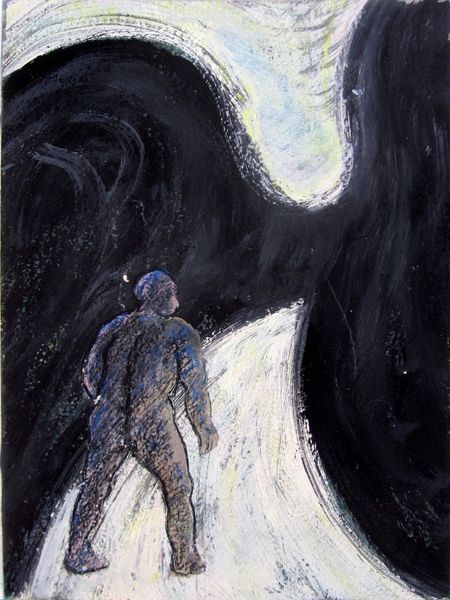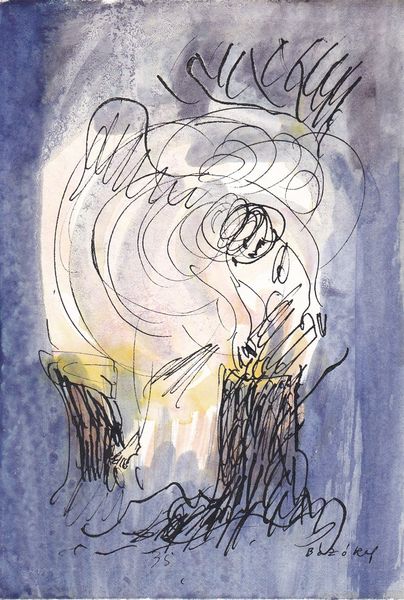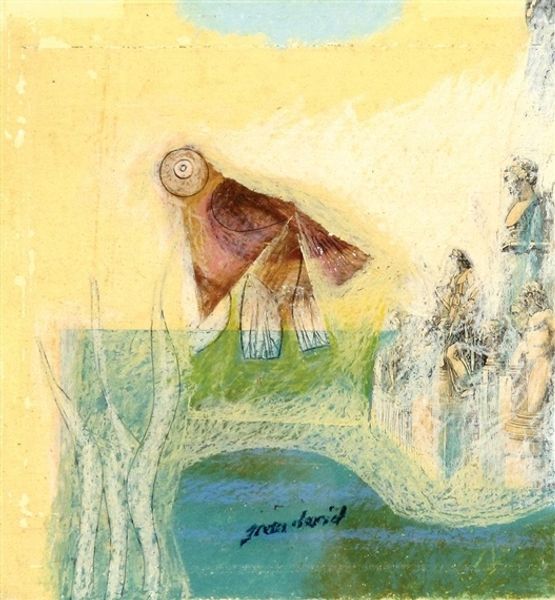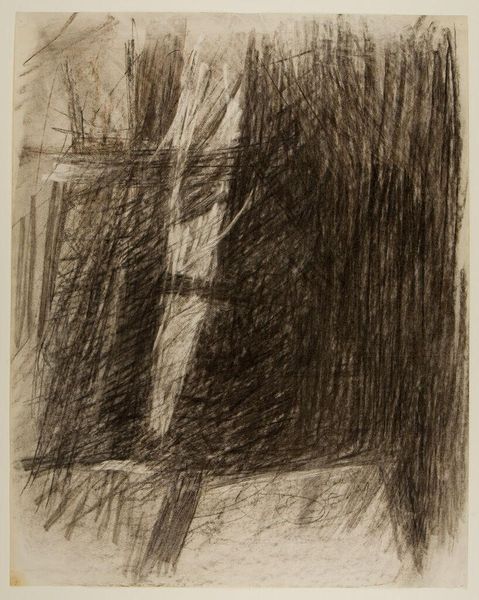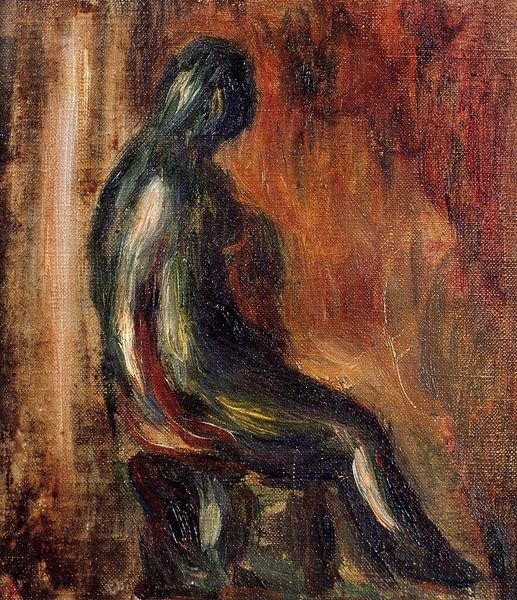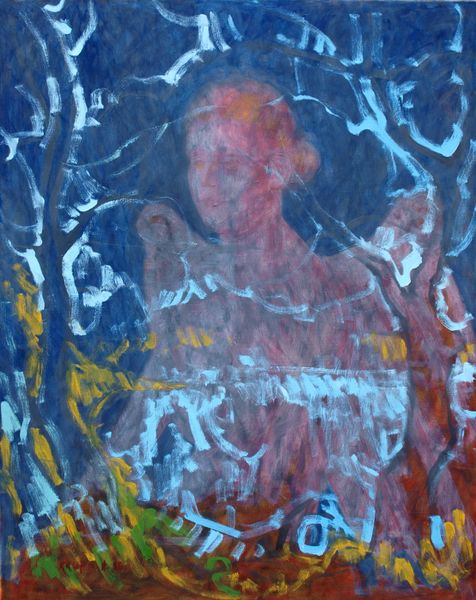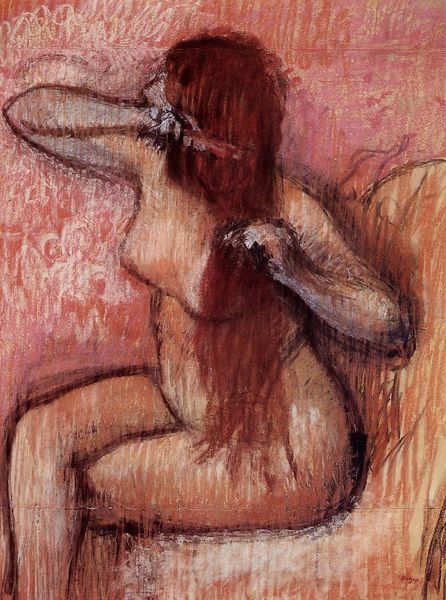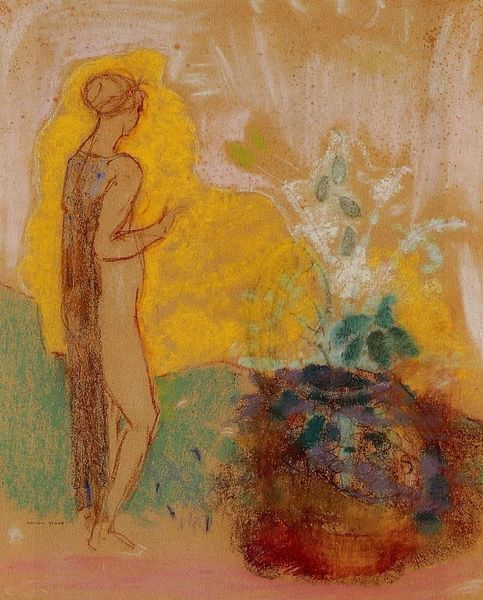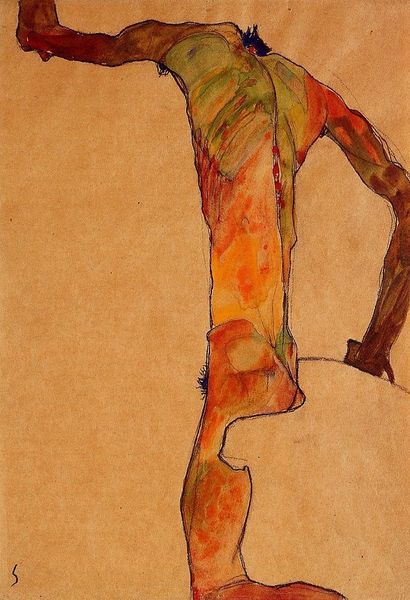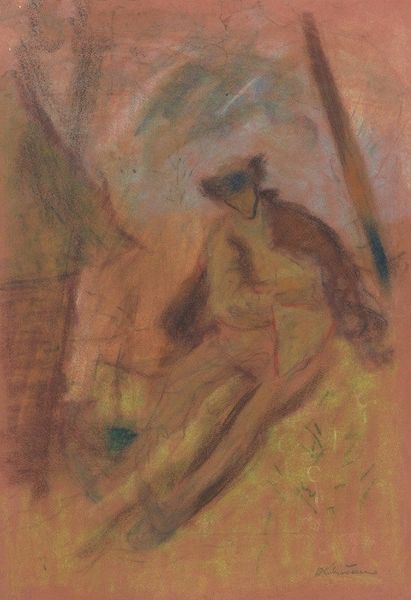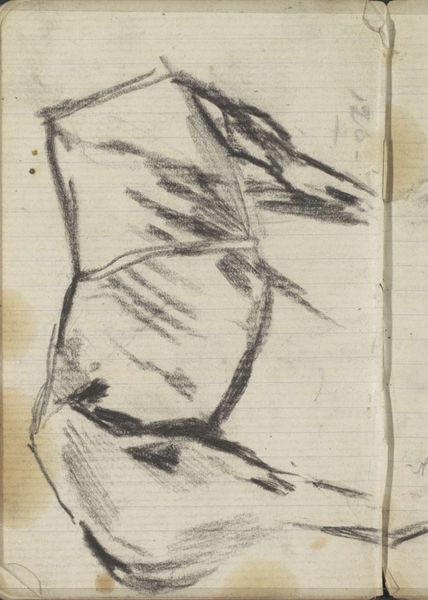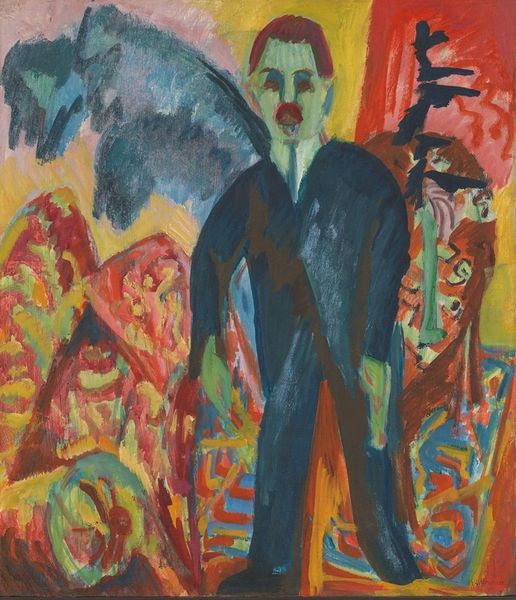
Dimensions: 142.24 x 106.68 cm
Copyright: Public domain
Curator: This is Odilon Redon’s pastel drawing, "The Man," created in 1916, currently residing at the Kröller-Müller Museum. It's striking, isn't it? Editor: Yes, the figure is so darkly rendered against this dreamy, almost celestial backdrop. I’m immediately drawn to the textures, the way the pastel creates this kind of soft, almost smudged quality to the man's body in contrast with the very light background. Curator: Redon often explored themes of identity and the self through figures situated within evocative, often ambiguous landscapes. Think about the socio-political climate of 1916 – the heart of World War I. Could this figure represent the common man, stripped bare, facing an uncertain future? The shadowy, nearly featureless form could be intentional, rendering the man universal. Editor: It's fascinating how the figure’s dark materiality stands out. Look closely – the body appears almost carved, yet made of something far less permanent, something susceptible to fading like charcoal. The negative space shaped around him seems just as intentionally crafted as his silhouette. We're left considering the fragility of both subject and medium. Curator: That materiality is significant! Redon consciously worked with symbolism, creating works meant to evoke emotional and spiritual responses rather than direct representation. That contrasts the harsh realities and suffering surrounding the war effort. This lone man—could he embody not just the universal, but also society’s disillusionment with ideals and progress? Editor: Yes, that struggle is echoed through the medium. Consider pastel’s relation to canvas—here, we are given an evident artistic labor with visible marks and smudges that could suggest emotional disruption, which certainly amplifies our reading of Redon's world and the materials' impact. Curator: Exactly, Redon pushes boundaries. It challenges traditional notions of identity. We’re forced to engage with questions of individual agency and social pressures as the materials amplify meaning. Editor: Examining how that very "mark making" evokes these socio-historical and individual themes through labor and technique ultimately demonstrates a world beyond that surface of just a simple man, a pastel, and an era. Curator: It’s work like this which really highlights that turn to internal narratives. Editor: Indeed. Redon leaves us contemplating the physical world and the labor of making itself.
Comments
No comments
Be the first to comment and join the conversation on the ultimate creative platform.
